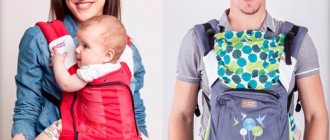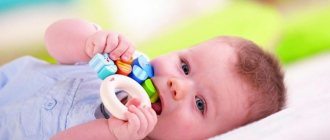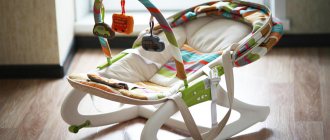Why use a child car seat
In an accident, the seat saves the child's life. If a child is not restrained, the impact could cause serious injury or even death. Children love to sit in the center of the back seat: they can clearly see the road and communicate comfortably with their parents. In a frontal impact, the child will hit their head on the dashboard or be thrown onto the road through the windshield. Crash tests prove this.
An unbelted child distracts the driver. Everything in a car is interesting for a child: buttons, levers, light bulbs. You want to press everything at once - this often distracts the driver from the road and can lead to an accident. It is especially difficult to concentrate when there are two children. Only talking on the phone takes up more attention.
Without a child seat, the driver will receive a fine. Traffic regulations require children under 7 years of age to be transported in a car seat. If the driver violates this rule and the inspector notices it, a fine of 3,000 rubles will follow.
Is it really necessary to equip a car with a child seat?
The new version of the traffic rules came into force in 2021. The changes also affected the rules for transporting children. A child under 7 years of age can be seated in the front or rear in “child restraint systems,” i.e. chairs and special cradles. A child from 7 to 11 years old must be in a restraint device in the front seat, and can be fastened with standard seat belts in the rear seat.
For failure to comply with the requirements - the absence of a car seat or its incorrect installation in the cabin - fines are provided.
Administrative penalties for the absence of a special child seat:
- driver-individual - 3 thousand rubles;
- official - 25 thousand rubles;
- legal entity - 100 thousand.
You can deposit money at the bank's cash desk, through a terminal or online banking within 70 days from the date of drawing up the protocol. A discount applies to payment of the fine. You can only pay half the amount indicated on the receipt if no more than 20 days have passed since the fine was issued.
The car seat ensures the safety of a minor passenger while driving, so it is necessary to use it for its intended purpose not only because of the administrative penalty for its absence:
- the force of inertia increases the weight of passengers several times, so in the event of emergency braking, it will be almost impossible to hold the child in your arms;
- an unbelted child distracts the driver from driving, which creates a danger for all road users;
- In the event of an accident, the built-in car seat belts can cause injury to the child as they are suitable for passengers over 140 cm tall.
The use of a restraint system ensures the safety of both the small passenger and the driver, and not only during an accident. If the only adult in the car is driving, the child may try to unlock the door, but the car seat will prevent him from doing so.
How to choose a child car seat for a child: groups of seats
To ensure that children of different ages feel comfortable and safe in a car seat, manufacturers have come up with a division into groups. Here is a table for choosing a child seat - first of all, focus on the age group, and then check the weight. For example, children 7 months old usually weigh about 8 kg - the chair will be in the “0+” group.
| Group | Age | Weight, kg |
| Group 0 | 0-6 months | 0-10 |
| Group 0+ | 0-12 months | 0-13 |
| Group 1 | 9 months - 4 years | 9-18 |
| Group 2 | 3-7 years | 15-25 |
| Group 3 | 7-12 years | 22-36 |
Selection by child’s weight category
Car seats come in several categories depending on the age and weight of the passenger. In addition to the main categories, there are universal seats with customizable settings. Such models are suitable for children from birth to 2-3 years or from 9 months to 6-12 years.
Group 0 (carriers and bassinets)
Group 0 car seats are used to transport children from birth to six months. For physiological reasons, newborns must be in a horizontal position, so the fixation device looks like a cradle with internal seat belts.
Some models can be mounted on a stroller chassis. But infant carriers and stroller baskets are not interchangeable, because... the latter are not equipped with special guides for secure fastening with the built-in vehicle belts.
For the safe transportation of a child in a car, the cradle is installed across the rear seat (perpendicular to the movement of the vehicle).
This is not the safest orientation for the locking device. Another drawback: the baby quickly grows out of the cradle.
To extend the life of the first car seat, parents choose models of category 0+. They are designed to transport children who weigh from 0 to 12 kilograms (maximum age - 1 year). Armchairs 0+ provide a semi-recumbent position and are installed in the front or rear seat facing rearward.
Group 1 (9-18 kg)
Group 1 car seats are designed for children from 9 months to 4 years.
Fixing devices must have:
- 5-point seat belts with shoulder pads that prevent damage to the baby's delicate skin and the belts from twisting;
- reliable central locking so that a child cannot unfasten it;
- additional side head protection, soft pads in the spine and hips.
It is recommended to install such devices against the direction of travel of the vehicle for as long as possible.
Group 2 (15-25 kg)
Group 2 restraint systems are intended for children from 4 to 6 years old. The difference from seats for younger passengers is the absence of 5-point seat belts.
The child is secured with standard seat belts. The product is installed in the direction of travel.
Group 3 (up to 36 kg)
For the safe transportation of children from 4-6 to 10-12 years old, structurally different devices are offered. This can be a regular car seat with an adjustable headrest height and without 5-point belts, or a booster - a seat without side protection, with a rigid base and armrests.
Combining groups
In order not to select several restraint systems for a fast-growing child, you can purchase an additional group model.
These chairs combine the features of several categories:
- 0+/1 - for children aged 6 months to 4 years (body weight - up to 18 kg);
- 2-3 - for passengers 3-12 years old (weight - from 15 to 36 kg);
- 1-2-3 - for children from one to 12 years old (9-36 kg).
Products of combined groups are suitable only for short trips. The reason for this is the versatility of children's fixation devices (after all, the physiological parameters and development of a child at 1 year and at 5 years are very different).
What to check on a car seat: safety certificate
Check to see if the child seat has an orange sticker, usually on the plastic backrest. This sticker guarantees that the manufacturer has tested the model and it meets safety standards.
In addition to possible injuries, there is another risk: the absence of a sticker is equivalent to the absence of a car seat, for which a fine is possible.
In Russia, two safety standards for child seats are in force simultaneously - ECE R44 and ECE 129. The second is more modern and focuses not only on the weight, but also on the height of the child. The main differences between these standards:
| ECE R44 | ECE 129 | |
| Up to what age should you transport facing rear? | 9 months | 15 months |
| Isofix mount | ✘ | ✔ |
| Side impact test | ✘ | ✔ |
If there is no sticker, ask the seller for a document stating that the chair is certified. If there is no certificate, refuse to purchase
How to choose a secure car seat
The chairs are attached to the seat using Isofix, Latch systems or standard belts. Let's consider each of the options.
Isofix fastening. It is considered the most reliable and convenient mount and is installed on most cars in Russia. With it, the chair is rigidly attached to the power brackets, which are installed on the body of the machine. The fastenings on the chair snap easily into place.
Before choosing a seat with Isofix, check whether power brackets are installed in your car.
Advantages compared to other mounts:
- easy and quick installation of the chair;
- cannot be installed incorrectly;
- best crash test results.
Minuses:
- chairs with Isofix are heavier than similar ones due to metal parts;
- more expensive than analogues without fastening.
Latch mounts. This mounting system is most often found on American cars such as Dodge or Chrysler. It differs from Isofix in that instead of metal guides, fabric strips are used, plus an “anchor” belt, which is attached to the power element behind the car seat.
According to the US Highway Safety Research Institute, only four car models failed the Latch test for safety, comfort and quality of fastenings: Ford Fiesta hatchback, Ford Fiesta sedan, Infiniti Q70, Jeep Compass. In these cars, installing the seat is so inconvenient that drivers attach it in a way other than that provided by the manufacturer - for example, with a standard seat belt.
In most cars, seats with this type of mounting can be used.
Pros:
- fastenings are as reliable as Isofix;
- chairs with Latch are lighter than chairs with Isofix;
- Can be attached to Isofix brackets.
Minuses:
- harder to find in stores than chairs with other fastenings;
- difficult installation - latches on fabric tapes are more difficult to get into the brackets. If the kit includes an “anchor” belt, installation becomes more complicated due to the location of the bracket - on the back of the car seat.
Fastening with standard belts. The belt is threaded behind the back of the chair or threaded through special holes and attached to a standard latch.
Pros:
- can be installed in any car - even if there are no power brackets. You only need a standard seat belt;
- Such chairs are cheaper than those with special fastenings.
Minuses:
- installation is more difficult than other types of mounts. If installed incorrectly, the safety of the chair will be much lower;
- The safety of such chairs is lower than that of other types of fastenings.
You can install a chair with an Isofix mount without looking, and there is no chance of an installation error - it either latches or it doesn’t
To get into the power brackets with the latches on the Latch tapes, you will have to get used to it. Chairs with Isofix do not have this problem. Source: mommydoctor.com
As a rule, car seats that are secured with standard belts are cheaper than those with Isofix and Latch
Universal car seat
Such chairs are sold labeled “group 0-1-2-3” and should be suitable for children from 0 to 12 years old. You can change the angle of the chair on the plastic base, the height of the headrest and remove additional soft inserts.
Pros:
- The chair will last a long time - from 0 to 12 years of age;
- If you buy a chair in the middle price segment, you can save money. If you buy expensive chairs, the savings are insignificant.
Minuses:
- the crash test results of such seats are worse than those of models made for a specific age group;
- Often these chairs are uncomfortable - anatomical pads and inserts do not always suit the child.
Svetlana Novikova, safe driving instructor, mother of 4 children The quality, comfort and safety of such seats highly depend on the manufacturer - look for crash tests of a specific model. If there is no data on safety tests, it is better not to buy such a chair. The rule “the more expensive the better” works with them.
For an infant, the angle of the universal chair should be closer to 100°. When the child grows up, the soft black inserts can be removed. Source: ozon.ru
Types of car seats
Devices for transporting children in a car are conventionally divided into groups, taking into account the child’s age and weight.
Divisions into groups of child car seats:
Devices for transporting children are rarely produced strictly for a certain age and weight of the child. Thanks to the adjustments, the model can combine several groups:
- 0/1 – model is designed for weight 0-18 kg, age 0-4 years;
- ½ – weight 10-26 kg, age up to 7 years;
- 2/3 – weight 14-40 kg, age up to 12 years.
The advantage of universal models is the increased service life of the car seat. Children grow quickly; until a certain age, parents will not have to buy several devices.
The disadvantages include the inconvenience of placement in a chair. It is safe to transport a one-year-old baby in a seat designed for a three-year-old. However, it will be uncomfortable for the child; the headrest may be located high.
Rules for choosing a child car seat
Test the car seat before purchasing. Regardless of whether you buy a chair secondhand or new in a store, check whether it will be comfortable to use. The child may toss and turn, cry, or directly say that he is uncomfortable.
Don't buy a chair for growth. Often such seats are uncomfortable for children, and crash tests show average or low scores.
Check the reliability of the belts. If there are no cuts or protruding threads on the belts, you can take the chair.
Search the Internet for crash tests for your specific model. The most convenient way is to search on YouTube using the words “child crash test seats” and add the name. For example, “crash test of the Happy Baby Spector child seat.” If there is no information about tests, it is better to refuse the purchase.
Check the ECE R44 or ECE 129 certificate. Here you just need to pay attention to the orange sticker.
Find out how to adjust the chair. The child's weight may remain within a category, for example from 9 to 18 kg, but not appropriate for age. Manufacturers took this into account and made headrests with height adjustment.
The first level is for a child’s weight 15-25 kg, the second - 25-36 kg. Source: neposeda-nn.ru
Top 10 best children's car seats
When choosing a suitable child restraint device for your car, you can rely on the rating of the best models from popular brands. These chairs are reliable and safe, comfortable for the child and parents.
Maxi-Cosi CabrioFix
A car seat with wide and deep space for the youngest passengers. The anatomical insert ensures the correct position of the spine.
The child's head is securely fixed with a soft headrest. The advantages of the model include the presence of a folding sun visor, comfortable seat belts and low weight.
Happy Baby Mustang
The product of group 1-2-3 adapts to the physiological characteristics of children from 9 months to 12 years thanks to adjustable 5-point seat belts with soft pads.
The product is adjustable in width. The headrest can be lowered higher or lower (depending on the child’s height), and there are soft side inserts for additional head protection. The chair has 4 backrest positions and a convenient adjustment mechanism.
Inglesina Marco Polo
A comfortable, anatomically shaped restraint product with the ability to adjust the backrest tilt is intended for groups 0+/1. The device is equipped with a reliable locking system for both internal 5-point seat belts and those built into the vehicle.
The headrest and seat width are not adjustable, but there are anatomical inserts to make car trips comfortable for children of different ages.
Chicco Youniverse
Category 1-2-3 seat with removable cover, ergonomic seat belts and IsoFix fastening system. The disadvantages of the model include short seat belts and difficulty of installation.
Britax Romer Evolva
The restraint system is intended for children from 9 months. The group 1-2-3 chair transforms as the child grows. For children weighing 9-18 kg, an internal 5-point seat belt is used.
When the child grows up (weight increases to 15 kg or more), he can be fastened with a 3-point car seat belt. Features of the model include a quick-release cover, an indicator of how secure the belt is fastened, and adjustable soft sides.
Nania I Max SP Luxe
Reliable and durable premium product.
Peculiarities:
- one-piece cast body;
- use during design of the results of crash tests conducted in the manufacturer’s laboratory;
- wide seat;
- 3 backrest height positions;
- adjustable headrest (six positions);
- Removable cover that is machine washable.
Zlatek Atlantic
Category 1-2-3 child car seat that converts into a booster seat. The model has a removable cover and headrest made of hypoallergenic materials.
The backrest is orthopedic: its shape has been improved so that the seat belt passes over the child’s body correctly.
Capella S12312I IsoFix
A budget product from an Italian brand with an IsoFix system and tilt adjustment (there is a position convenient for sleeping). The seat may not be suitable for large children. The height of the belts is not adjustable, the device is bulky.
Peg Perego Viaggio Via
The restraint system features a comfortable seat:
- length increased;
- the device ensures a comfortable position of the legs;
- backrest tilt is provided (3 positions);
- the shape of the backrest does not restrict the child’s movements in the shoulder area;
- The headrest is wide, deep, curved.
The product received a “satisfactory” rating in crash tests. Additional safety is provided by the “anchor” fastening.
Nania Revo
The model of the French brand is intended for children from birth to 1-1.5 years (up to 18 kg). The special feature of the chair is its swivel mechanism. This provides comfortable conditions for fastening seat belts, ease of getting a child in and out, and ease of changing positions in the direction and against the direction of travel.
Remember
- The child is buckled into a child car seat for safety.
- If you transport a child without a seat, the inspector may issue a fine.
- Choose a chair according to the age of the child and the type of fastenings.
- Don't forget about the orange sticker - this is a safety sign. It can also be checked by a traffic police officer.
- If you choose a universal seat, be sure to look at the crash tests of a specific model. If there was no verification, refuse the purchase.
- To choose a chair, check whether the child is comfortable in it, whether the belts are secure and what adjustments there are.
All articles by the author: Evgeniy Lesnov











